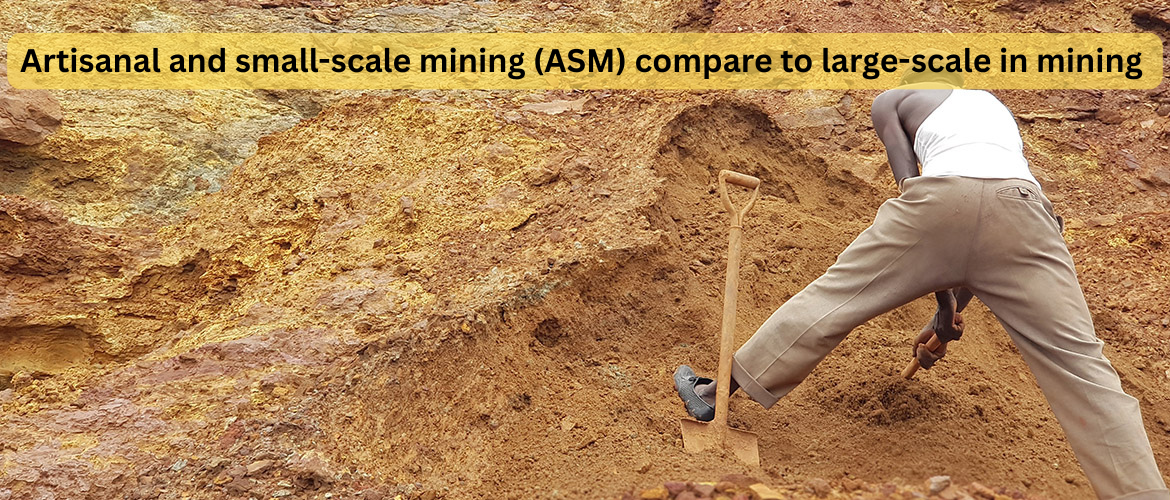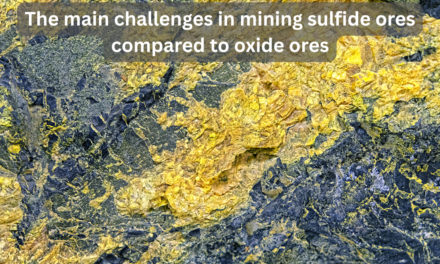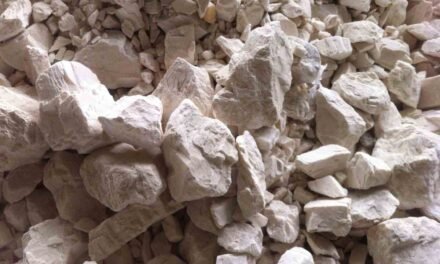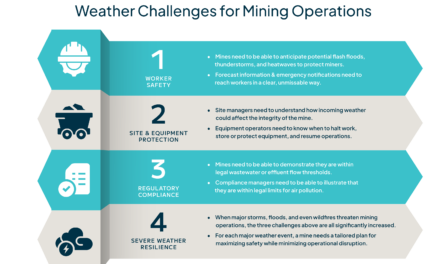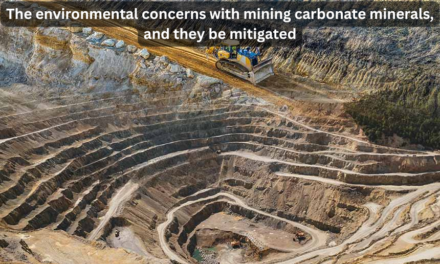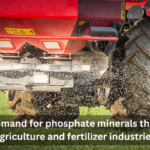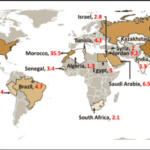Artisanal and small-scale mining (ASM) and large-scale mining (LSM) are two distinct approaches to mineral extraction, each with its own characteristics, advantages, and challenges. While they both aim to extract valuable minerals, they differ significantly in terms of scale, methods, impacts, and governance. Here’s a comparison of ASM and LSM across several key factors:
1. Scale of Operation
- Artisanal and Small-Scale Mining (ASM):
- Scale: ASM typically involves individuals or small groups of miners working on a limited scale, often without the use of large-scale equipment. These operations can be informal or even illegal, with minimal or no government oversight.
- Labor: The workforce in ASM is generally small and manual. It often involves family members or local community members working with basic tools like picks, shovels, or panning techniques.
- Production Levels: ASM operations generally produce small quantities of minerals, which may not have a significant impact on the global market but are important locally for livelihoods.
- Large-Scale Mining (LSM):
- Scale: LSM involves industrial-scale operations, with the use of heavy machinery, advanced technologies, and highly mechanized processes. These operations typically have large capital investments and are often run by large multinational companies.
- Labor: The workforce in LSM is highly specialized, consisting of skilled workers, engineers, and operators. The labor force is often more organized, with workers hired on a formal basis.
- Production Levels: LSM operations are designed to extract large volumes of ore over long periods, often making a significant contribution to national and global mineral production.
2. Methods of Extraction
- Artisanal and Small-Scale Mining (ASM):
- Tools and Techniques: ASM relies heavily on manual labor and simple tools, such as panning, sluicing, or rudimentary digging. In some cases, basic mechanized tools like small drills or pumps may be used, but the operation remains relatively low-tech.
- Efficiency: The methods used in ASM are often inefficient and environmentally damaging. For instance, panning can lead to the loss of valuable minerals, while improper mining techniques can cause land degradation and erosion.
- Environmental Impact: ASM is typically associated with high environmental costs, including deforestation, water pollution (from mercury or cyanide use), and soil erosion. The lack of regulation exacerbates these issues.
- Large-Scale Mining (LSM):
- Tools and Techniques: LSM utilizes advanced machinery such as excavators, dump trucks, crushers, flotation cells, and processing plants. These operations often use sophisticated technologies like drilling rigs, blasting, and cyanide leaching for ore processing.
- Efficiency: LSM is more efficient in terms of resource extraction and processing. However, this efficiency comes at the cost of higher energy consumption and larger environmental footprints.
- Environmental Impact: While LSM operations typically follow stricter environmental regulations, they still cause significant environmental impacts, including deforestation, water contamination, and tailings disposal issues. However, large companies are often required to implement mitigation measures, such as reclamation plans and pollution controls.
3. Economic Contribution
- Artisanal and Small-Scale Mining (ASM):
- Local Livelihoods: ASM is often a vital source of income for individuals and communities, particularly in developing countries. It provides jobs in areas where formal employment opportunities are limited, and many miners rely on it as their primary livelihood.
- Economic Informality: Many ASM operations are informal or illegal, which means miners often work without government oversight, leading to issues with taxation, labor rights, and safety standards. ASM also tends to lack access to financing and technological support, making it harder to improve productivity or reduce environmental impacts.
- Large-Scale Mining (LSM):
- National Economies: LSM contributes significantly to national economies, especially in resource-rich countries. It generates revenue through taxes, royalties, and exports, which can support government infrastructure, social programs, and economic growth.
- Local Communities: While LSM provides jobs and infrastructure development (e.g., roads, schools), its benefits to local communities can be mixed. In some cases, large mining operations displace local communities or contribute to social unrest due to land rights disputes and inadequate compensation.
4. Regulation and Governance
- Artisanal and Small-Scale Mining (ASM):
- Informality: ASM is often informal or unregulated, leading to a lack of oversight regarding worker safety, environmental protection, and taxation. In some countries, a significant portion of ASM is illegal, making it difficult for governments to enforce laws and regulations.
- Challenges in Formalization: While some countries are working to formalize ASM and improve conditions (through licensing or cooperative models), many miners continue to operate in informal or illegal sectors due to barriers such as high registration costs, lack of access to credit, or inadequate government support.
- Large-Scale Mining (LSM):
- Regulation: LSM is typically subject to comprehensive regulations, including environmental standards, labor laws, and tax policies. Governments require mining companies to obtain permits and licenses, conduct environmental impact assessments (EIA), and adhere to health and safety standards.
- Corporate Social Responsibility (CSR): Many large mining companies implement CSR programs, which may include local infrastructure development, community health programs, and environmental protection initiatives. These efforts, however, can be inconsistent, and sometimes the implementation is more about improving the company’s public image than driving genuine social change.
5. Safety and Worker Conditions
- Artisanal and Small-Scale Mining (ASM):
- Safety Concerns: ASM miners often work in hazardous conditions, including poorly constructed tunnels, lack of protective gear, and exposure to toxic substances (e.g., mercury, cyanide). Mining accidents, such as cave-ins, explosions, and drowning, are common.
- Health Risks: Many ASM miners suffer from health issues like respiratory diseases (due to dust inhalation), skin diseases, and long-term exposure to toxic chemicals. There is often little to no access to medical care.
- Large-Scale Mining (LSM):
- Safer Work Environment: LSM operations tend to have more formalized health and safety protocols, including protective equipment, regular training, and accident prevention measures. However, large-scale mining can still be dangerous, with risks such as equipment accidents, blasting incidents, and chemical exposure.
- Health and Welfare: Many large mining companies provide workers with healthcare benefits, insurance, and housing, though this can vary depending on the location and company policies.
6. Technology and Innovation
- Artisanal and Small-Scale Mining (ASM):
- Limited Technology: ASM is typically low-tech, relying on simple, manual tools and outdated methods. While some miners have access to basic machinery, such as pumps and small crushers, innovation and technology adoption in ASM are limited due to financial constraints and lack of education or training.
- Opportunities for Improvement: Some initiatives aim to introduce cleaner, more efficient technologies in ASM, such as mercury-free gold extraction techniques. However, widespread adoption is hindered by the informal nature of ASM and lack of access to capital and knowledge.
- Large-Scale Mining (LSM):
- Advanced Technology: LSM utilizes cutting-edge technologies like autonomous trucks, remote-controlled drilling, 3D seismic modeling, and AI for ore sorting. These technologies improve efficiency, reduce costs, and increase safety.
- Innovation and Sustainability: LSM companies are investing in technologies that promote sustainability, such as electric mining trucks, renewable energy sources, and water treatment systems. These efforts are often driven by both environmental concerns and regulatory requirements.
7. Environmental Impact
- Artisanal and Small-Scale Mining (ASM):
- High Environmental Damage: ASM often causes extensive environmental degradation due to unsustainable practices, such as deforestation, water contamination (from mercury or cyanide), and poor waste management. Since ASM is often unregulated, these impacts are exacerbated.
- Small-Scale, Localized Impact: Although the environmental footprint of ASM is smaller than that of LSM, the cumulative effect of many small, unregulated operations can be significant, particularly in ecologically sensitive areas.
- Large-Scale Mining (LSM):
- Significant Environmental Impact: LSM can lead to large-scale environmental destruction, including deforestation, soil erosion, water contamination, and the creation of toxic waste tailings. However, because LSM is usually regulated, companies are often required to mitigate these effects through environmental management plans, land reclamation, and pollution controls.
- Advanced Mitigation Efforts: LSM companies often employ technologies for managing environmental impacts, such as tailings dams, water treatment facilities, and reforestation programs.
Conclusion
While artisanal and small-scale mining (ASM) plays a crucial role in providing livelihoods for millions of people, especially in developing countries, it is often associated with informal, unsafe, and environmentally damaging practices. Large-scale mining (LSM), on the other hand, operates on a much larger scale with advanced technologies and stricter regulations, but it also faces significant environmental and social challenges.

